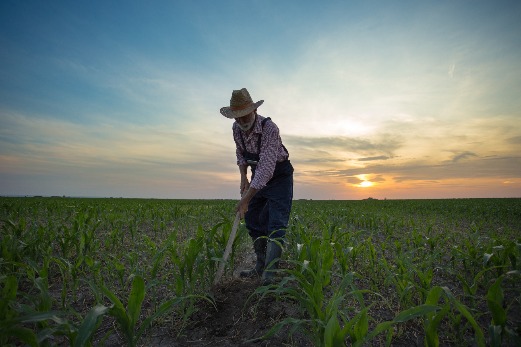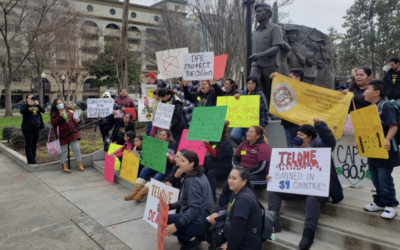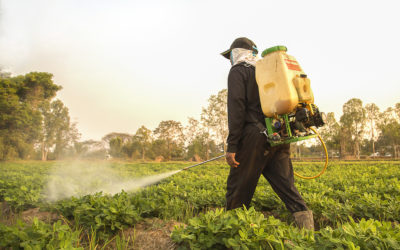By Barbara Sattler
We, nurses, and others arrived at the small-scale strawberry farm with others who were participating in a “Farmworker Tour” sponsored by the Center for Farmworker Families in Watsonville, CA. Ann Lopez, the Center’s Executive Director, welcomed us and noted that we were not to take photographs of any of the farmworkers in order to keep their identity and them safe. The farmworkers who we met at the farm were Mexican and Indigenous Mexican women. There were translators, as most of the women did not speak English. We learned of the historic American policies, such as the North American Free Trade Act, that have created great hard ships, food insecurity, and poverty in Mexico. When NAFTA was passed, corn – which had been an essential food crop in Mexico, became more valuable as an animal feed for American beef cattle and thus reduced the corn available for local communities to eat. This was a post-NAFTA story that none of us knew.
We learned about the challenges that farmworkers experiences: difficult physical labor, heat exposure, wage theft, sexual assault, lack of health care, pesticide exposures and the ever-present fear of Immigration and Customs Enforcement (ICE) that can, in the blink of an eye separate husbands and wives, children and parents.
From the farm, we all got back into our cars and drove to where the farmworkers live. This short journey was a lesson in institutionalized racism. Up a winding road above the town of Watsonville, the first thing we passed was the “dump” – a mile’s worth of municipal and construction waste. Immediately following the dump, was the county jail with its ominous 12- foot barbed wired fence. This was followed by the county’s public housing locale and, at the end of the road, was the farmworker housing, an array of concrete block single story houses. There is no public transportation serving the road. This one short road in Watsonville is the story of inequity, injustice, and inhumanity that many experience in America. It is the story of the people that many want to keep invisible, even though they are “essential” communities.
We discovered many things during the farmworker housing tour, including the fact that many of the farmworker families return to the same house year after year. But they are evicted every fall and allowed to return every spring. The housing remains vacant but they are not allowed to stay. Only a few families can return to their home countries but many cannot and instead find very substandard substitutes for housing during the winter months.
This tour and the experiences of our nursing colleagues who care for farmworkers and their families in the Central Valley prompted California Nurses for Environmental Health and Justice to work, in earnest, to address farmworker health and safety. In the two years since our first tour, we have produced a webinar series for nurses on farmworkers (archived on our website); guest-lectured in nursing schools; received a grant from UC Davis’ Farmworker Outreach Program to prepare health professionals, including Community Health Workers, about the specific health risks that farmworkers face; and we have become active members in the Food and Farm Resilience Coalition that is promoting a comprehensive bond bill for a 2024 CA Proposition that will include $500 million for farmworker housing.
We continue to work with Ann Lopez and the local Watsonville area farmworkers. Erika Alfaro, who is on our Leadership Council and also the President of her local chapter of the National Association of Hispanic Nurses, is helping to spearhead the local work. There is much, much more to do and we are committed to this crucial work which is so vital to our mission of environmental justice for all.




